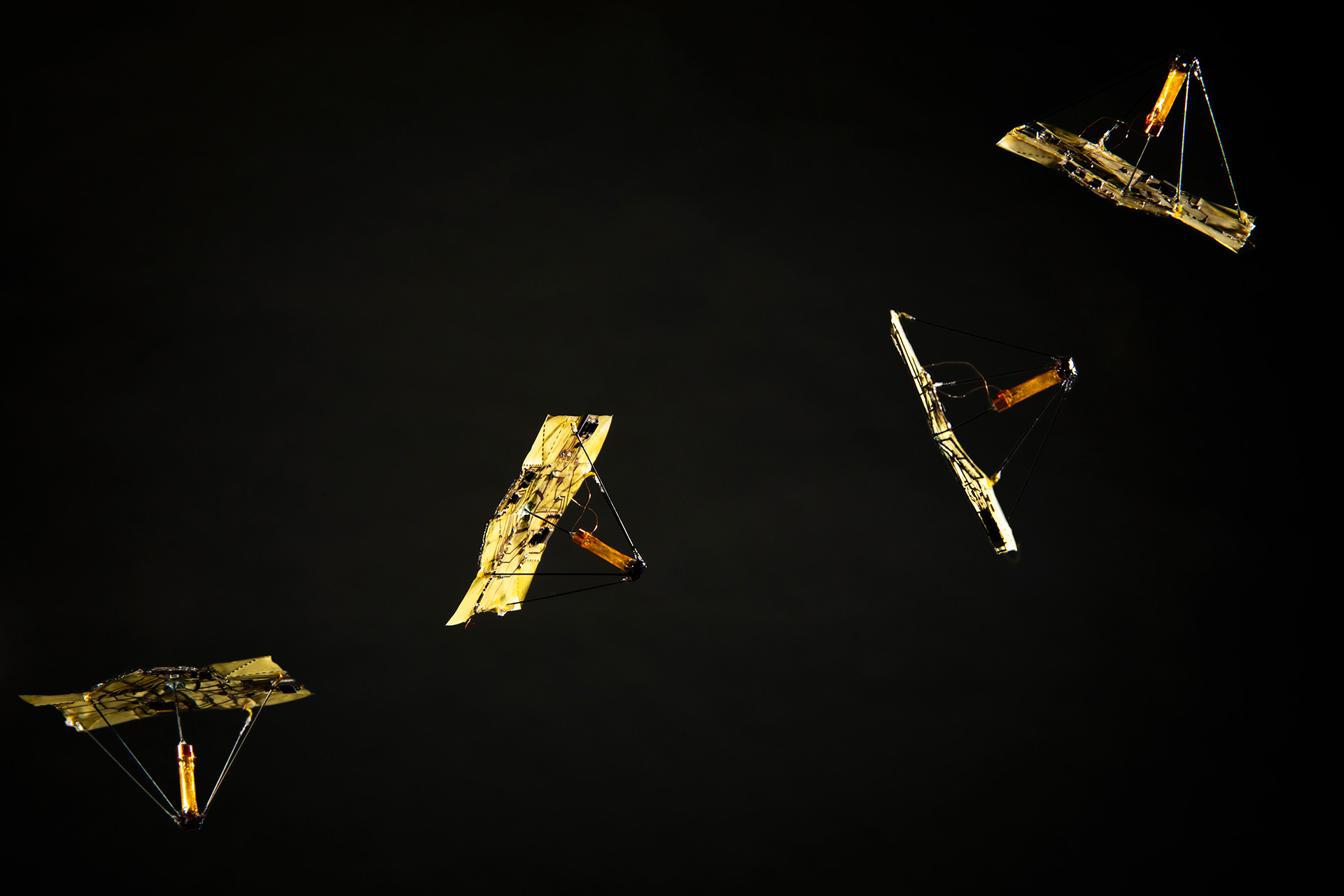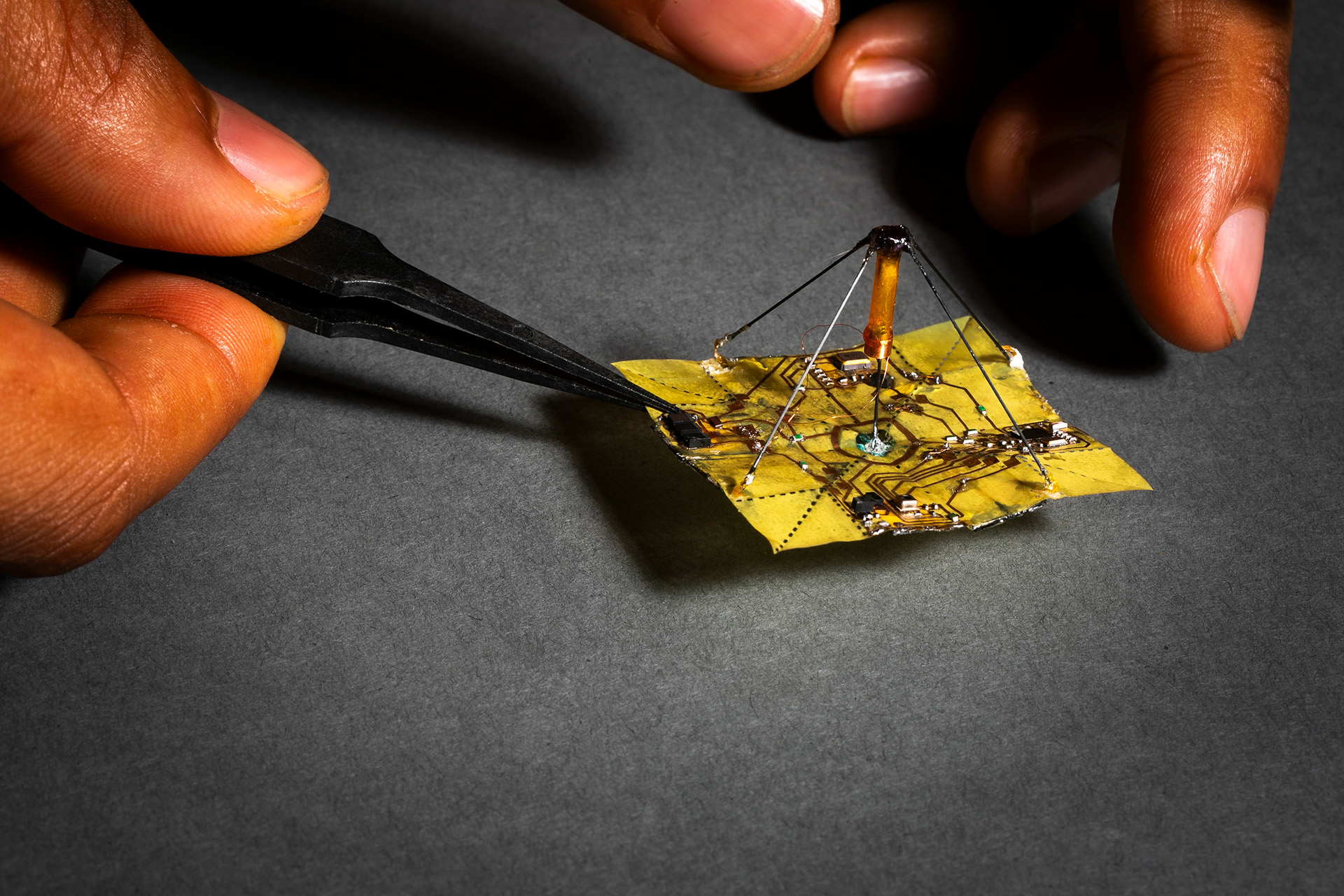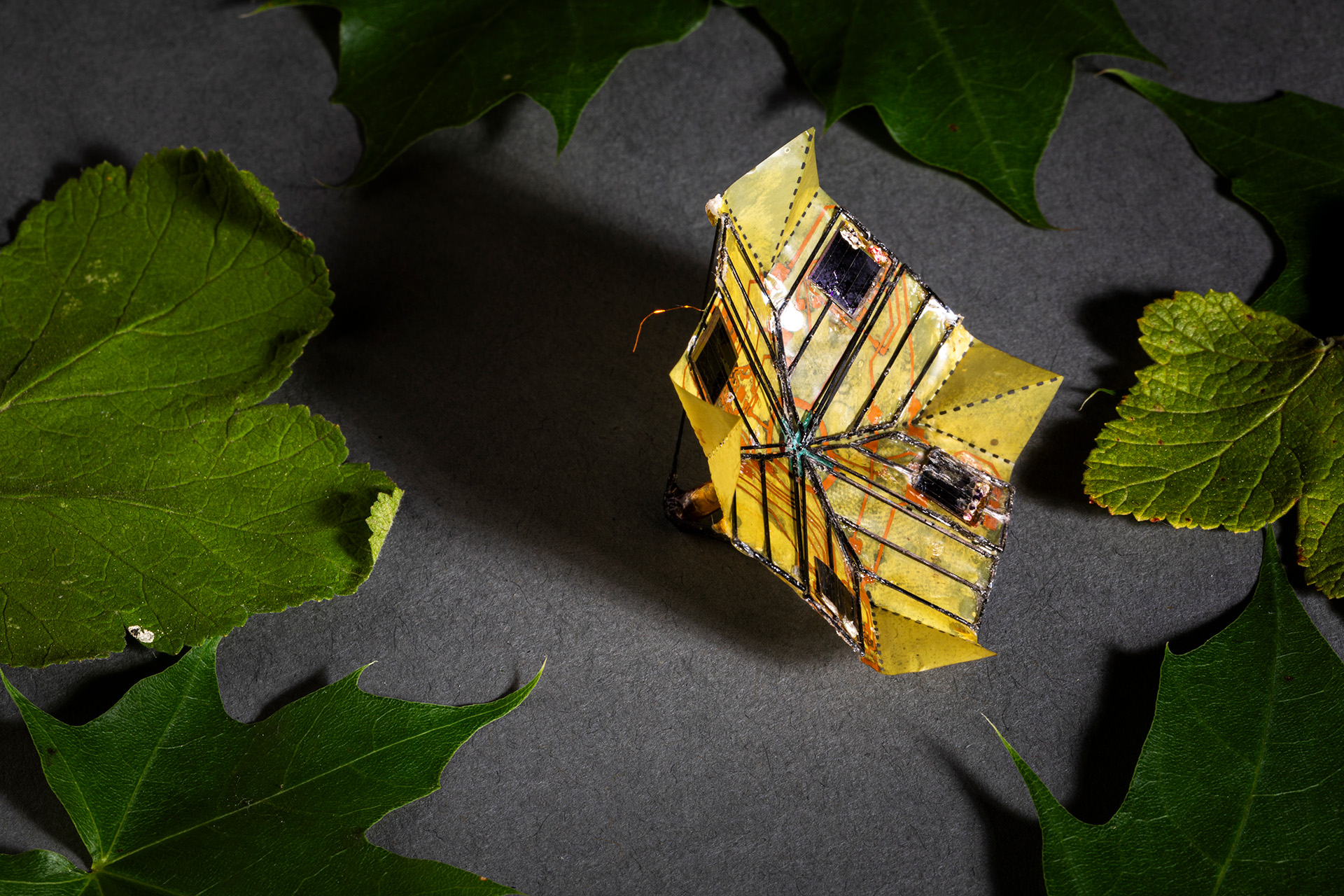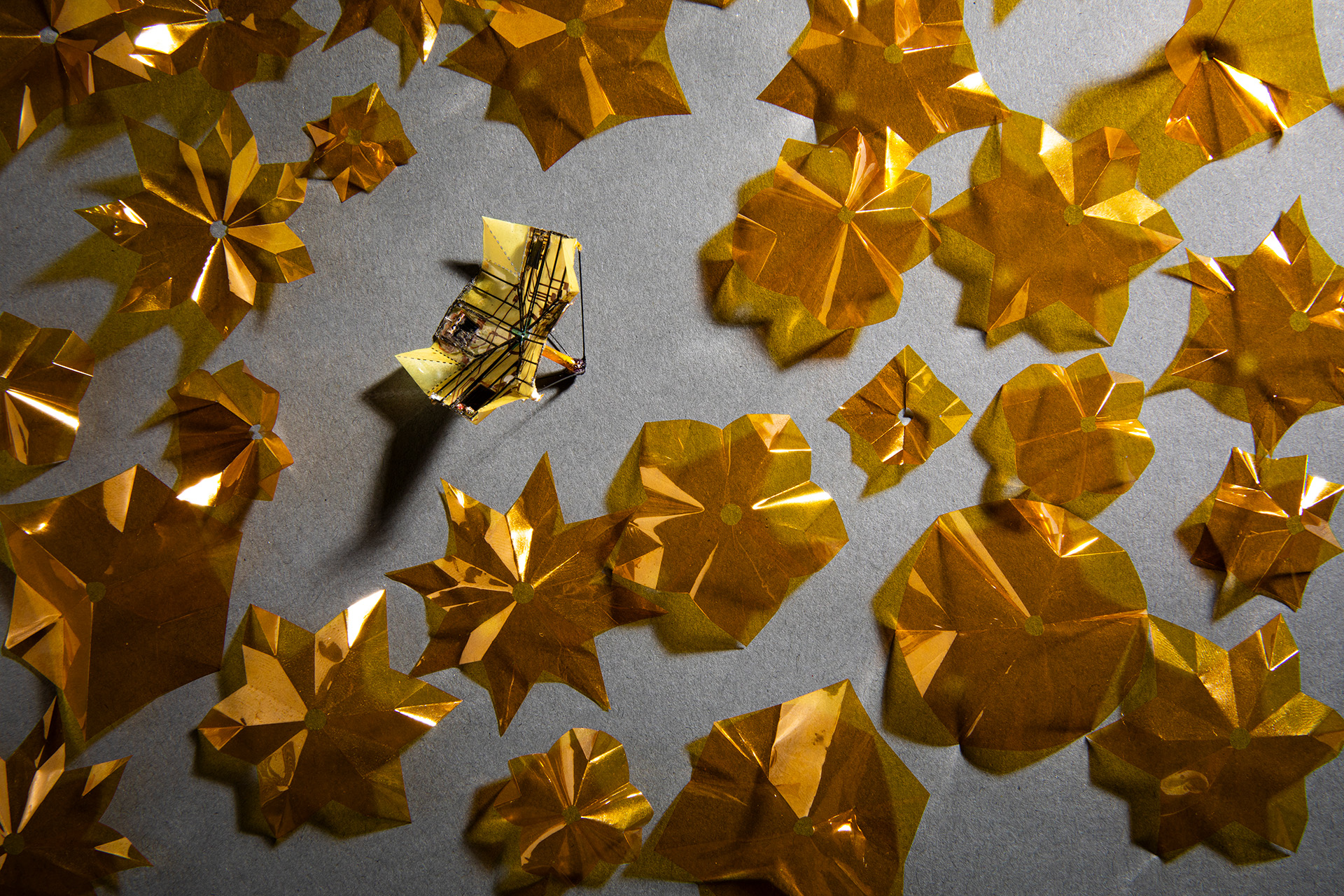Solar-powered shape-changing origami microfliers


Publications
Solar-powered shape-changing origami microfliers [full text] [arXiv preprint]
Kyle Johnson, Vicente Arroyos, Amélie Ferran, Raul Villanueva, Dennis Yin, Tilboon Elberier, Alberto Aliseda, Sawyer Fuller, Vikram Iyer, Shyamnath Gollakota. Science Robotics 2023


Links
Data and code
Press release (short)
Press release (extended)

Photo Credits: Mark Stone/University of Washington
Battery-free microfliers take flight
Tiny microfliers can be used to monitor how temperature, lighting conditions or other environmental factors vary across atmosphere as they descent. A network of such microfliers could help researchers paint a picture of what's happening for different applications, including digital agriculture and monitoring climate change. The idea of microfliers, battery-free sensing devices that can fly in the wind mimicking leaves and seeds but also control their descent, has been a longstanding vision in both the scientific community and popular culture. Despite decades of work since proposals of "smart dust" and advances in specific technologies toward this vision, researchers have faced many challenges in developing fully functional microfliers that harvest ambient energy like sunlight and use it to control their descent. This is because devices like motors that provide lift and control for drones are large and heavy, and even small insect-inspired wings are challenging to operate on the energy small solar cells can harvest. In this work we take a different approach with the key idea of using the unique properties of origami structures to create battery-free origami microfliers that can change their shape in mid-air to switch from a chaotic tumbling fall to a straight downward descent.
This approach opens up a new design space. For example, could we achieve finer grained control by switching back and forth between the states? Can we develop strategies to control their direction and land in precise locations? control descent and make these devices land in precise locations by switching back and forth between the states? We hope this work is the first step towards a future vision for creating a new class of fliers and flight modalities.